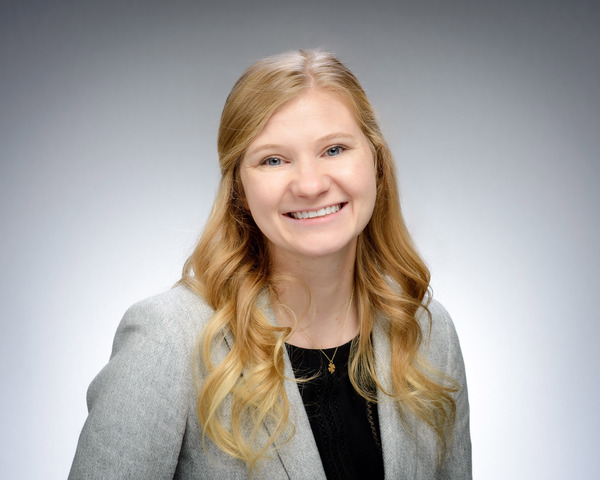Madeline Glennon, a third-year doctoral student in the Department of Chemistry and Biochemistry at the University of Notre Dame, has received a predoctoral fellowship from the American Heart Association.

Glennon is completing her doctoral degree in the lab of Jessica A. Brown, associate professor in the Department of Chemistry and Biochemistry. Glennon’s work focuses on RNA — triple-helical RNA, specifically — and its link with diseases including heart disease.
“It is definitely a big honor to receive this fellowship,” she said. “I spent pretty much all of my summer writing and rewriting my application, and it was definitely a lengthy process to get it finalized, but I was so very honored to receive this.”
RNA is commonly known to be single stranded — one type, mRNA, carries information from our DNA. Sometimes RNA can have two strands, like a DNA double helix, and occasionally this double helix bonds with a so-called third strand to form a triple helix. One of these triple helices is MALAT1, which allows the RNA to become very stable. This causes MALAT1 to accumulate in cells and promotes disease, including multiple types of cancer and heart disease. Glennon is using this RNA to identify how small molecules or drugs interact with it.
“I was overjoyed when Maddie informed me that she was awarded an AHA predoc fellowship,” Brown said. “She is a team player and has been working diligently on this research project since day one.”
Once scientists understand more about RNA triple helices, others can develop therapies or drugs that can be used to mitigate the effects of heart attacks.
“That’s the ideal and is a goal of small molecule therapeutics,” Glennon said.
She went into the field of RNA during her master’s degree program at University of Colorado, Denver, and realized she enjoyed learning about the modifications of RNA and how it affects various enzymatic processes, such as reverse transcription and its implications in biotechnology.
Because Glennon’s project required her to establish methodology that was entirely new to Brown’s laboratory, she also trained with Charles Bell, associate professor at The Ohio State University, who is one of the collaborating investigators on her grant. Bell specializes in X-ray crystallography and cryogenic-electron microscopy techniques. The techniques allow researchers to gather high-resolution atomic models, where they can see how drugs interact with the MALAT1 triple helix.
“I am extremely proud of what Maddie has accomplished,” said Brown, who is affilliated with the Berthiaume Institute for Precision Health and the Harper Cancer Research Institute. “We are grateful for the external assistance from collaborators and now AHA to make this research possible.”
Glennon’s fellowship will pay for the remaining two years of her doctoral program, and even though biochemistry doctoral degrees might take slightly longer, she hopes to defend her dissertation in 2025.
“After graduating I’d like to work either in an academic setting or the pharmaceutical industry,” said Glennon, who is also the Chemistry-Biochemistry-Biology Interface Program pre-doctoral fellow at Notre Dame and holds an Arthur J. Schmitt Leadership Fellowship in Science and Engineering. “I know I really want to stay in the structural biology field, because I really enjoy these techniques a lot.”
Although she grew up in Colorado, her father is a Notre Dame graduate, class of 1981, and her mother is a St. Mary’s graduate, class of 1982. Notre Dame is in her blood, she said, joking.
“When it comes to working hand in hand with your PIs (principal investigators), it’s a very collaborative institution,” Glennon said. “I really feel I can go and talk to anyone and get feedback, and I have a really great committee that I work with the whole time; they are the ones who hear every single one of your defenses and oral exams.
“They are always willing to give as much mentorship and feedback as possible, so it’s really just a nice open community of researchers.”
This work is supported by American Heart Association Grant #23PRE1011061/Madeline Glennon/2023.